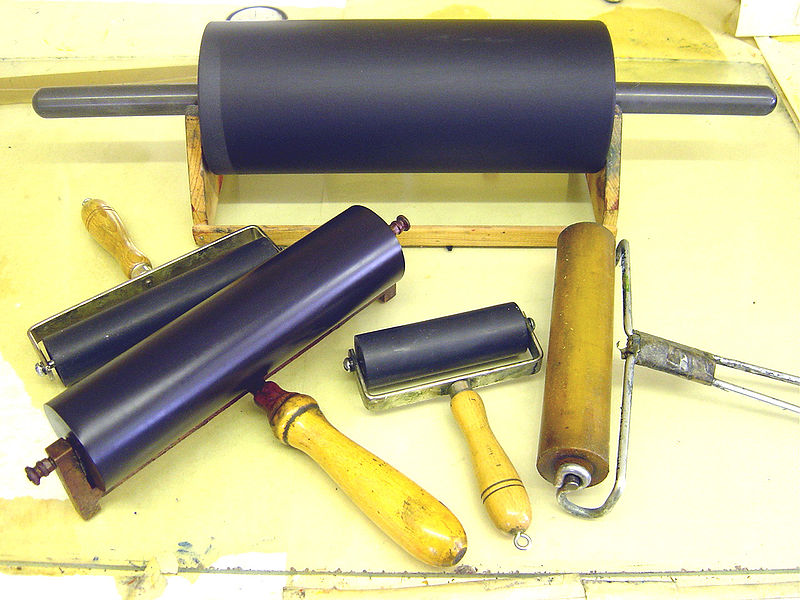Thanks to Elana Goren over at Spider Ink Studio, I have been introduced to another incredible printmaker (they're just everywhere! only academia would dare breathe that printmaking is dead! pbtht!). Bruce Waldman's monotypes (well, he calls them monoprints, but since they don't appear to involve a plate or block that's been etched, carved or altered in anyway, I would maintain they're monotypes) are apparently made with the edges of brayers.
For those non-printmaking folks out there, here's what a brayer looks like, via Wikipedia:
Bruce has very kindly provided me with a description of his process to share with you. It's fascinating:
I work on a large piece of Plexiglas and tape a white piece of paper to the back so that I can clearly see my image while I am working it up. I use only oil based printing inks; mostly etching, but sometimes combined with litho. I use the inks straight out of the container, and do not add oil or any kind of thining substances or solvents to thin the ink. I draw and apply the ink to the Plexiglas directly with small rubber rollers of varying widths, using the flat part of the roller for larger areas, and drawing with the edge of the roller for line work. It is hard to control drawing with the rollers, so it forces me to draw and paint on the Plexiglas in a spontaneous manner, not trying to tightly control my lines and marks while I am making them.
If I don't like parts of the image, I just wipe them away and redraw them. I work both dark on light, and also pull lights out of dark areas with a cloth or paper towel, and then press inked textures and materials on to the image. Sometimes they don't completely work when I print them, so I pin them up on the wall and work directly back into them with printing inks, rollers, pressed textures, and brushes. I only use one plate, and only run it through the press once.This is a very direct and raw way to work. It is really for people who are not that interested in complex techniques, and who love to draw and paint directly and spontaneously. I usually create many bad prints before I get a few that I am really happy with. I love working this way because it allows me to attack the plate with a reckless abandon, which gives the images a feeling of wild motion. I developed these techniques over many years of experimentation as a reaction to creating hundreds of small, intricate, and technically complex ethcings; which I also tremendously enjoy making.
Thanks, Bruce, for the great summary of your process, and for generously letting me show a few of your prints. I have a very tiny selection here, so go check out more of Bruce's prints.









1 comment:
Great work Bruce! Thanks for sharing.
Post a Comment